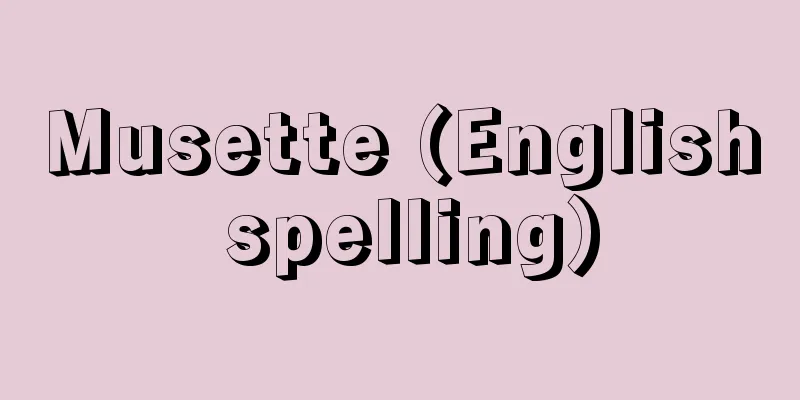Buddha place - Buddha

|
An organization that produces Buddhist statues. It is an abbreviation of Zobutsu-sho (Butsu-jo), and simply referring to it as Butsu-sho does not mean the government-run Zobutsu-sho (Butsu-jo) in the Nara period or the large temples in the early Heian period that each had their own sculptor. From the mid-Heian period onwards, Butsu-sho meant the house or workshop of the Daibutsu-shi (master sculptor), who was the head of the sculptors, and at the same time came to mean the group of sculptors and their lineage under the command of the Daibutsu-shi. Jocho, said to be the first professional Japanese sculptor, and his sons and disciples each produced such Butsu-sho. Beginning with Jocho's son Kakujo, there are the Shichijo Butsujo (Kei school), which produced many master craftsmen during the Kamakura period, including Unkei and Kaikei, the Sanjo Butsujo (En school) which arose from his disciple Chosei, and the Shichijo Omiya Butsujo (In school) which arose from Kakujo's son Insuke, all of which were named after the location of the temple. These names came into use after the latter half of the Kamakura period, and are thought to have originally been named after the respective great sculptors. After the middle of the Kamakura period, a proliferation of Butsujo branches off from these temples, and in the Muromachi period, the tradition that sculptors had to be registered as monks was broken, and even Butsujos made by completely lay people began to be made. [Akio Sato] [Reference] |Source: Shogakukan Encyclopedia Nipponica About Encyclopedia Nipponica Information | Legend |
|
仏像を制作する組織。造仏所の略称で、単に仏所といった場合、奈良時代の官営の造仏所や、平安時代初期に大寺院がそれぞれ仏師を抱えていたものとは意を異にする。平安中期以降は仏師の棟梁(とうりょう)である大(だい)仏師の家や工房を仏所といい、同時にその大仏師の指揮下にある仏師の集団とその系統をも意味するようになった。日本の職業的仏師の最初といわれる定朝(じょうちょう)やその子や弟子が、各自こうした仏所をつくっている。定朝の子覚助(かくじょ)に始まり、鎌倉時代に運慶(うんけい)・快慶(かいけい)をはじめ多くの名工を生んだ七条仏所(慶派(けいは))、弟子の長勢から出た三条仏所(円派(えんぱ))、覚助の子院助に発する七条大宮仏所(院派(いんぱ))などがあり、いずれも仏所の所在地に由来した命名である。こうした呼称は鎌倉時代後半以降で、当初はそれぞれの大仏師の名を冠してよんだものとみられる。鎌倉時代なかば以後になると、これらの仏所から分かれた仏所が乱立の状態を呈し、室町時代には、仏師は僧籍をもつというそれまでの伝統は破られて、完全な俗人の仏所までがつくられるようになった。 [佐藤昭夫] [参照項目] |出典 小学館 日本大百科全書(ニッポニカ)日本大百科全書(ニッポニカ)について 情報 | 凡例 |
<<: Reification - Versachlichung (English spelling) German
>>: Bushmaster - bushmaster (English spelling)
Recommend
Customers
…He also describes drives as "mental represe...
Ougift goat (English name) Euplexaura erecta
A coelenterate (cnidaria) of the family Myrtle fam...
Near sighted eye
… When accommodation is stopped, the position at ...
Floor tightening - Tokojime
This is a method of land improvement to reduce the...
Mesangium
…This gap is bridged by a thin membrane called th...
Profornis bavarica (English spelling) Profornisbavarica
...It is classified as a member of the Archaeopte...
Putting-out system (English: Putting-out system)
A wholesaler is an entrepreneur who acts as an in...
Lawn bowls
A game in which players roll a ball on a grass cou...
Kogimon-in
1292-1357 During the Kamakura and Nanboku-cho per...
Euēnos (English spelling) Euenos
…The representative sophists of the time were Pro...
Manpozan Incident
In July 1931, armed clashes between Korean and Ch...
Umbrella seal - Umbrella seal
Also written as kasajirushi, kasaken, kasafu, kasa...
Fish sauce - gyosho
Seafood is salted, fermented, and aged, and the re...
Echo (English spelling)
In Greek mythology, she is an echo-female spirit. ...
Words after leaving the comfort of one's own home
It is also read as "Shutsujo Kogo." It ...






![Yutagawa [Hot Spring] - Yutagawa](/upload/images/67cd141255c76.webp)


